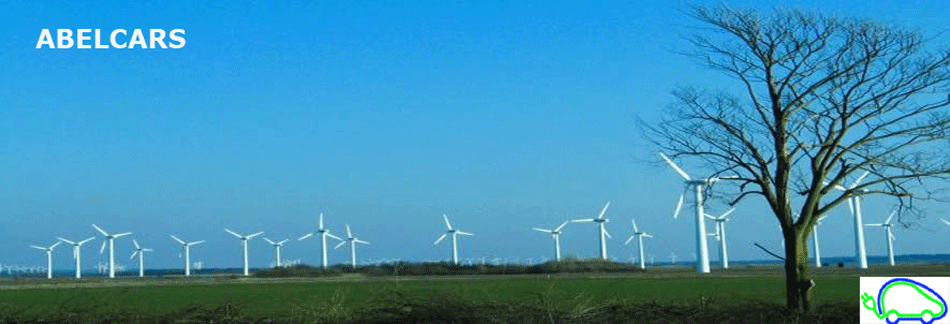ENERGY SYSTEM
In our passive house we have different energy systems:
- Electricity from the main grid
- Water from the public supply
- Solar thermal energy from a 12.6m2 collector
- Solar power from a 5m2 photovoltaic collector
- Heat recovery ventilation
- Solar power from 26 photovoltaic panels
The electricity is supplied by the public power grid. It is a 3phase 230/400V- 25A connection. We have bought 10 shares in a 3MW turbine, which will be erected in 2010 here in the area app. 4km from our house. The 10 shares are equivalent to 10.000kWh of electricity per year. It is more than the consumption we recon to have from the grid. As such we generate more electricity from wind than we buy.
The water is coming from the public supply. It is spent and wasted as common here. Our annual consumption is app. 70m3.
The house is heated with a thermal solar heating system. The collectors are 12.6m2 and placed on 2 walls facing near southwards. The vertical positions are not optimal, but practical. Their positions do work well in winter, where we need their heat at most. In summer they have reduced efficiency, which is fine, as we then limit the problem of overheating.
The heat from the solar collectors is pumped into a 1.000 liters storage tank. This tank is the heart of the heating system. From the storage tank, the warm tap water is generated via a heat exchanger. The heat exchanger is chosen because it has almost no tap water reservoir, say the hot tap water is always fresh heated water. This excludes the risk of growing legionella bacteria in a lukewarm reservoir.
The room heating is also coming from the storage tank. …
 2x3 horizontal collectors fixed vertically
2x3 horizontal collectors fixed vertically
 The storage tank of 1000 liters
The storage tank of 1000 liters
 The heat exchanger for cold water
The heat exchanger for cold water
 Anton constructs himself the heat recovery system for the ventilation of the house
Anton constructs himself the heat recovery system for the ventilation of the house
 The second end of the ventilation box: 600 drilled holes at each end
The second end of the ventilation box: 600 drilled holes at each end
 There is a lid at each end which can be opened in order to clean the dirty pipes
There is a lid at each end which can be opened in order to clean the dirty pipes
 Here you can see the glass pipes
Here you can see the glass pipes
 Detailed view on the insulation inside the heat exchanger
Detailed view on the insulation inside the heat exchanger
 Here you can see the radiator connected to the heat exchanger
Here you can see the radiator connected to the heat exchanger
The 26 photovoltaic panels are placed east and west on the roof of the old house. It is not an optimal orientation, but it produces after all more than 80 % of an annual yield compared to a perfect southward orientation. The 13 panels towards east are rated at 3.14 kWp and alike on the west side. The inverter is at 4.2 kW and 3 phase 400 V. As the panels are orientated east. and west, they don't produce full power at the same time, hereof the 4.2 KW inverter matches the output from the 6.28 KWp panels.
Since comissioning in july 2012 and until end of 2012 they have produced 1777 kWh. A full annual production is rated at 4700 kWh!. In the same period we have consumed 3130 kWh, which gives a selfsufficiency of 57 %. This consumption includes 10.000 km in our electric car.
See the charts about our production of solar heat and electricity here.
 Photovoltaics on the west side of the roof
Photovoltaics on the west side of the roof
 Photovoltaics on the east side of the roof
Photovoltaics on the east side of the roof
In 2013 we will upgrade our photovoltaic collector with 8 additional panels and swap the inverter to a 5.5 kW. This is an upgrade of 30 % in power and annual production.
Our photovoltaic system is connected to the main grid, hereof the exces power is exported to the grid and imported back when the photovoltaic power is insufficient. We have a "netto metering agreement", which means, that the import and export is outbalanced at the end of the year, so we pay import minus export. In 2012 we had only to pay 43 % of our total consumption. You can read more about the agreement here (in danish)




